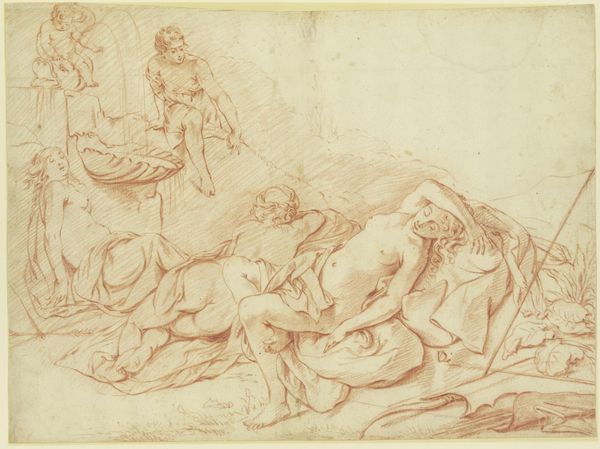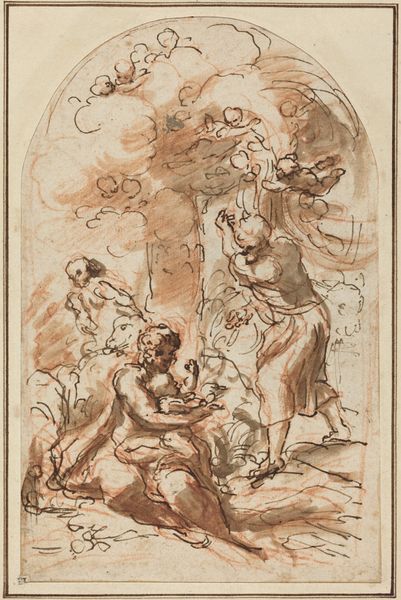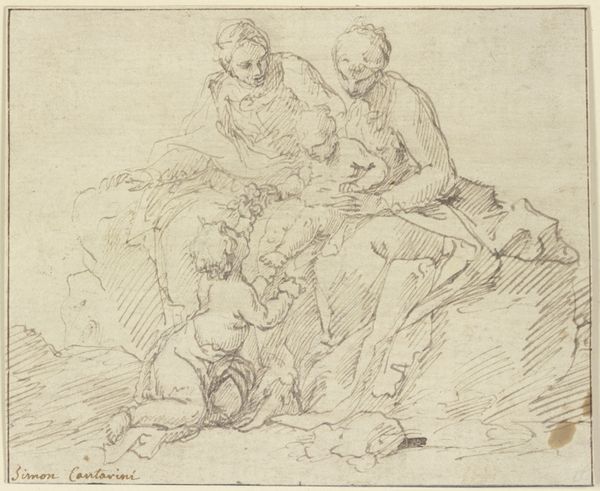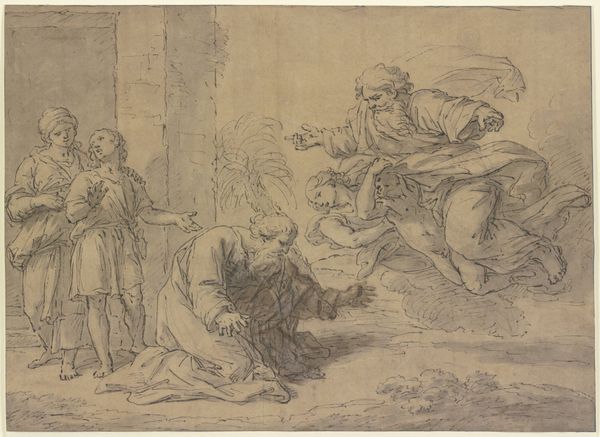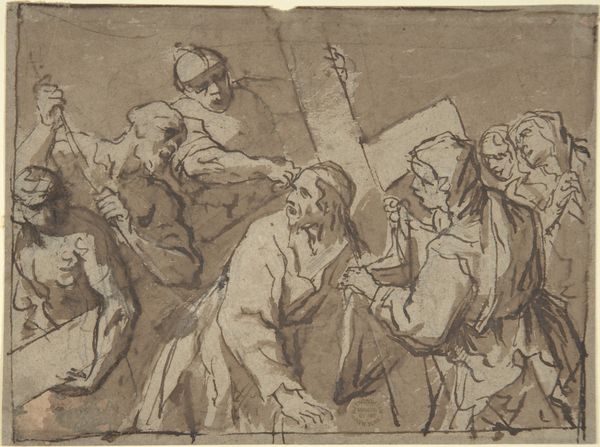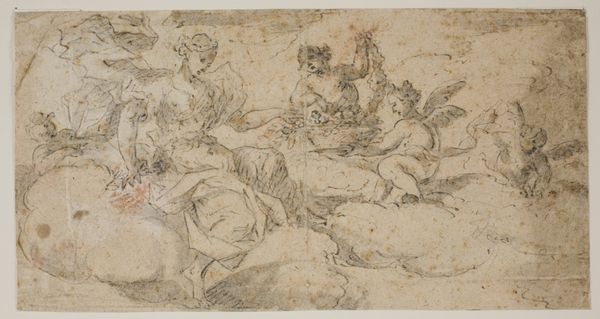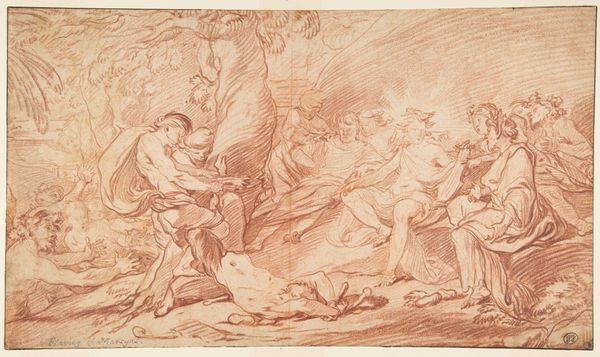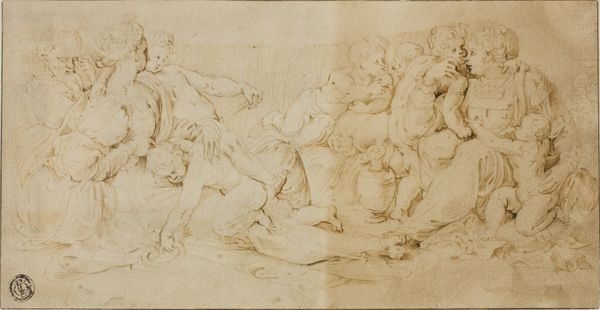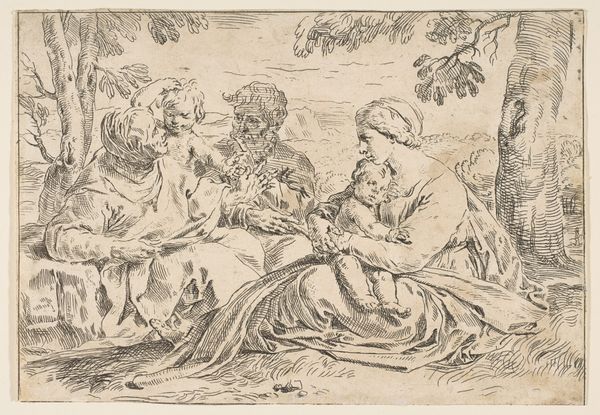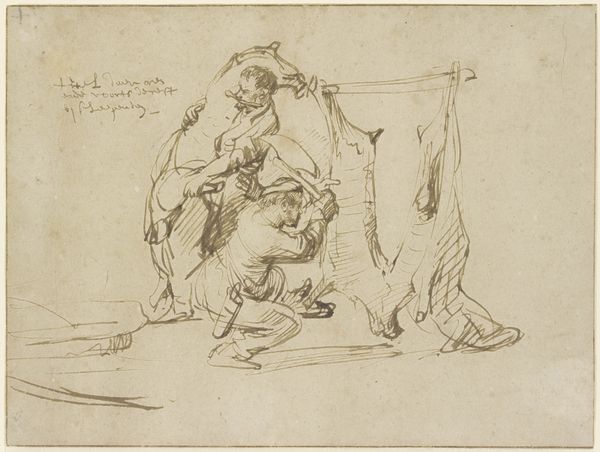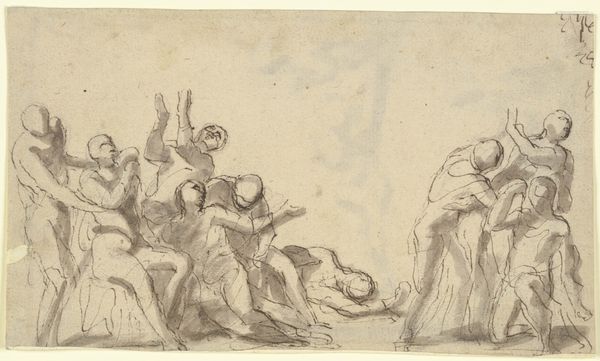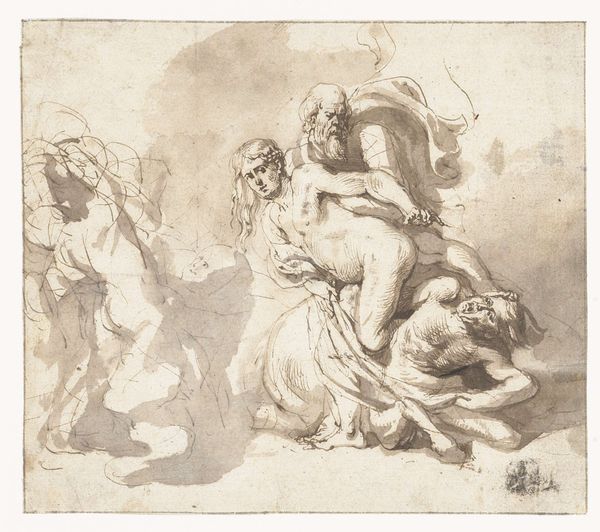
drawing, ink
#
drawing
#
baroque
#
figuration
#
ink
#
group-portraits
#
history-painting
#
nude
Copyright: Public Domain
Editor: Here we have Peter Paul Rubens's "Finding of Moses," a drawing done between 1611 and 1614, currently housed in the Städel Museum. It’s a striking ink drawing; the figures are so dynamic and expressive, despite the monochrome palette. What do you see in this piece that might not be immediately obvious? Curator: The "Finding of Moses" is more than just an illustration of a biblical scene; it’s a powerful encoding of cultural anxieties and aspirations. Note the central figure, Moses – his nakedness symbolizes vulnerability but also purity. Consider how the women discovering him represent compassion but, equally, the disruptive potential of the 'other' entering their established social order. Editor: The "disruptive potential," could you elaborate? Curator: Think about what Moses represents, symbolically. A child of slaves, destined to lead his people to freedom and challenge existing power structures. The act of finding him can represent that disruption of the status quo that leads to societal transformation. Now, see how the artist captures both the delicate humanity of this child, along with the gravity of the history. This piece serves as cultural memory, reminding its intended audience that challenging injustices comes at a cost, that true change is birthed from exposure to difficult truths. What feelings does that juxtaposition spark in you? Editor: It’s unsettling but ultimately hopeful. I now appreciate how Rubens layered so many deeper meanings. Thanks for your insight! Curator: My pleasure! It’s artworks like these that connect us with complex dialogues from the past, echoing themes that still resonate profoundly.
Comments
No comments
Be the first to comment and join the conversation on the ultimate creative platform.
